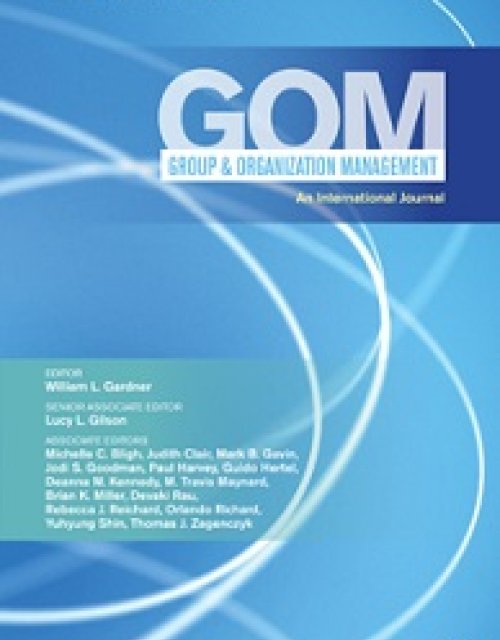Publication records
Subject(s)
Human resources management/organizational behavior
Keyword(s)
Decision making, ethics, psychology, research management
We present the data from a crowdsourced project seeking to replicate findings in independent laboratories before (rather than after) they are published. In this Pre-Publication Independent Replication (PPIR) initiative, 25 research groups attempted to replicate 10 moral judgment effects from a single laboratory’s research pipeline of unpublished findings. The 10 effects were investigated using online/lab surveys containing psychological manipulations (vignettes) followed by questionnaires. Results revealed a mix of reliable, unreliable, and culturally moderated findings. Unlike any previous replication project, this dataset includes the data from not only the replications but also from the original studies, creating a unique corpus that researchers can use to better understand reproducibility and irreproducibility in science.
Volume
3
ISSN (Online)
2052-4463
Subject(s)
Product and operations management; Strategy and general management; Technology, R&D management
Keyword(s)
decentralized energy, RWE, E.ON, Germany, power generators
JEL Code(s)
Q40, Q48
Volume
26
Journal Pages
10–12
Subject(s)
Technology, R&D management
Volume
2016
Journal Pages
663–670
ISSN (Online)
2194-4172
Subject(s)
Strategy and general management
Keyword(s)
Case Study Writing; Case Study Teaching; Case Study Method
Secondary Title
Case studies as a teaching tool in management education
Pages
121–140
ISBN
9781522507703
Subject(s)
Management sciences, decision sciences and quantitative methods
Keyword(s)
Shapley value, potential, random partition, concentration of power, communication graph, fairness, efficiency, efficient extension, fair extension, Myerson value
JEL Code(s)
C71, D60
We study values for TU games with a communication graph (CO-values). In particular, we show that CO-values for connected graphs that are fair and efficient allow for a unique efficient and fair extension to the full domain.
With permission of Elsevier
Volume
146
Journal Pages
103–106
Subject(s)
Human resources management/organizational behavior
Keyword(s)
Crowdsourcing science, replication, reproducibility, research transparency, methodology, meta-science
This crowdsourced project introduces a collaborative approach to improving the reproducibility of scientific research, in which findings are replicated in qualified independent laboratories before (rather than after) they are published. Our goal is to establish a non-adversarial replication process with highly informative final results. To illustrate the Pre-Publication Independent Replication (PPIR) approach, 25 research groups conducted replications of all ten moral judgment effects which the last author and his collaborators had “in the pipeline” as of August 2014. Six findings replicated according to all replication criteria, one finding replicated but with a significantly smaller effect size than the original, one finding replicated consistently in the original culture but not outside of it, and two findings failed to find support. In total, 40% of the original findings failed at least one major replication criterion. Potential ways to implement and incentivize pre-publication independent replication on a large scale are discussed.
With permission of Elsevier
Volume
66
Journal Pages
55–67
Subject(s)
Ethics and social responsibility; Human resources management/organizational behavior
Keyword(s)
Corporate social responsibility, corporations, environmental sustainability, human capital, shared value, socially responsible business
Volume
14
Journal Pages
34–39
Subject(s)
Information technology and systems
Keyword(s)
Hardware Trojans, malicious hardware, layout modifications, bug attacks
Journal Pages
625–647
Subject(s)
Finance, accounting and corporate governance
Keyword(s)
Fair value, financial instruments, value relevance, banks
JEL Code(s)
M41, N20
This paper investigates whether, and if so, to what extent, Level 3 fair values disclosed by European banks provide useful information to investors and are reflected in firm value changes. Using a unique sample of 416 hand-collected firm-year observations from European banks reporting under IFRS, in contrast to previous research conducted in the US, we find no overall evidence that changes in Level 3 fair values are associated with changes in firm value. However, the value relevance of Level 3 fair values depends on the category assigned to financial instruments. Level 3 fair values that are held for trading are reflected in firm value. Further analyses suggest that this effect is driven predominantly by banks that operate in market-based economies and hire audit firms with deep industry expertise
At the author's request the PDF file of this working paper was removed. Please contact the authors for further information.
View all ESMT Working Papers in the ESMT Working Paper Series here. ESMT Working Papers are also available via SSRN, RePEc, EconStor, and the German National Library (DNB).
Pages
58
ISSN (Print)
1866–3494
Subject(s)
Human resources management/organizational behavior
Keyword(s)
Team adaptiveness, patterned team interactions, in-process planning, dynamic situations, simulation
Previous research asserts that teams working in routine situations pass through performance episodes characterized by action and transition phases, while other evidence suggests that certain team behaviors significantly influence team effectiveness during nonroutine situations. We integrate these two areas of research—one focusing on the temporal nature of team episodic performance and the other on interaction patterns and planning in teams—to more fully understand how teams working in dynamic settings successfully transition across routine and nonroutine situations. Using behavioral data collected from airline flight crews working in a flight simulator, we find that different interaction pattern characteristics are related to team performance in routine and nonroutine situations, and that teams engage in more contingency, in-process planning behavior during routine versus nonroutine situations. Moreover, we find that the relationship between this in-process planning and subsequent team adaptiveness is curvilinear (inverted U-shaped). That is, team contingency or in-process planning activity may initially increase team adaptiveness, but too much planning has adverse effects on subsequent performance.
With permission of SAGE Publishing
Volume
41
Journal Pages
491–525
ISSN (Online)
1552-3993
